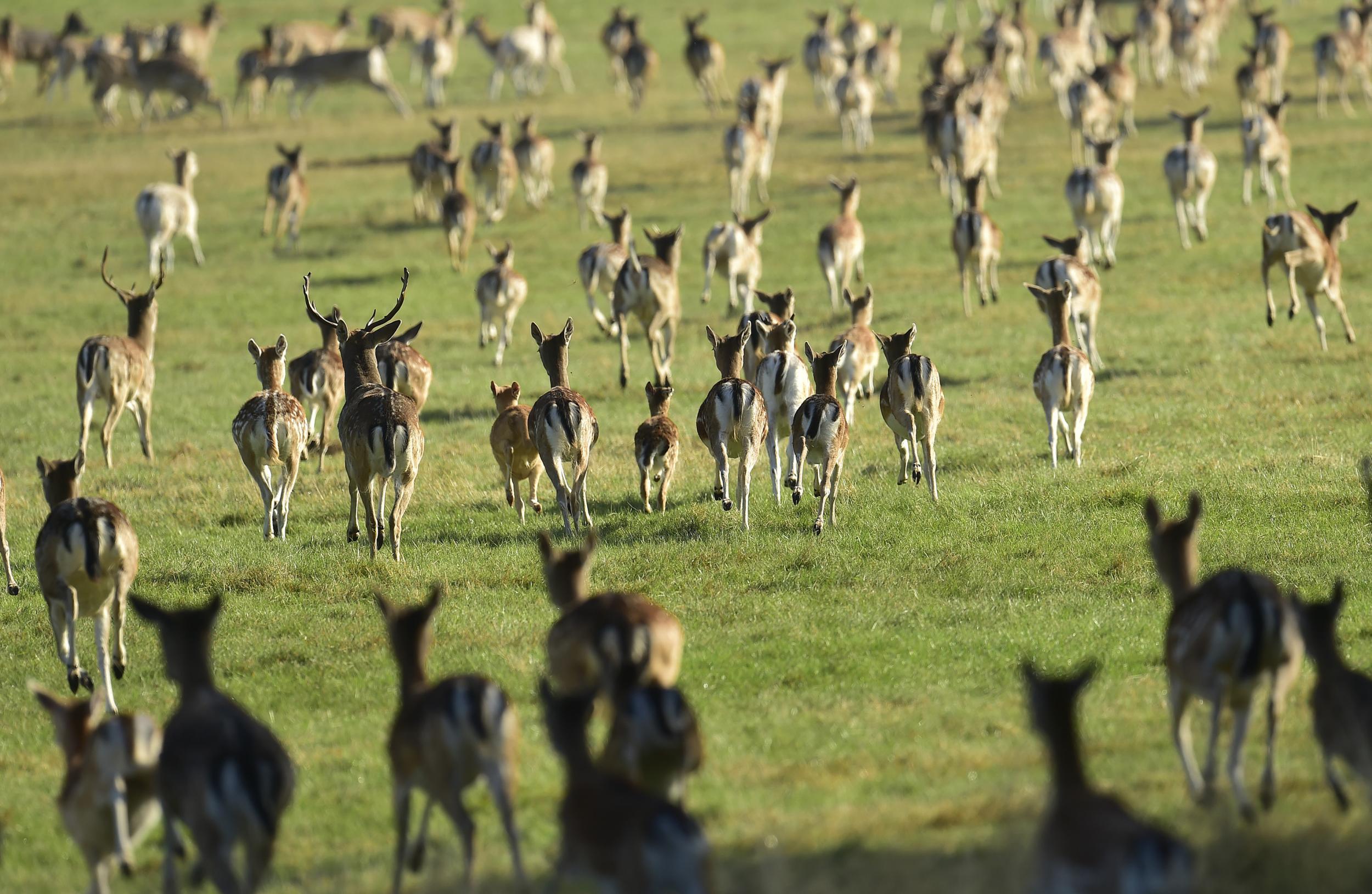Wild deer should be killed en masse to help woodland birds survive, ecologist says
Academic says the public can decide what kind of woodlands they want but only a 'drastic reduction' in deer numbers in highly populated areas will help birds and small mammals

Wild deer should be killed on a massive scale if people want thriving populations of woodland birds like the nightingale, willow tit and lesser spotted woodpecker, an ecologist has claimed after a study laid bare the dramatic effect they can have on forests.
Researchers used a laser scanner to create incredibly detailed, three-dimensional images of 40 different woodland areas in the Weald and the Welsh Marches.
They found areas with a high population of deer had 68 per cent less under-storey foliage than forests with relatively low levels, according to a paper in the Journal of Applied Ecology.
One of the researchers, Dr Markus Eichhorn, of Nottingham University, said studies had showed this was having an adverse effect on numbers of woodland birds, small mammals and insects.
“Deer populations are at extraordinarily high levels due to a combination of factors including the absence of large predators, a decline in hunting and the autumn sowing of crops that produce winter food for foraging animals,” he said in a statement issued by the university.
“It is clear from our research that if we want to encourage more woodland birds then we need to take action to restore the woodland structures they require, but in many areas it will need a drastic reduction in deer to have any real impact.
“We should not think of it in terms of a cull. We already eat venison in Britain but a large proportion of that is farmed meat.
“If wild-caught deer appeared on our menus or in the local butchers it would encourage people to eat venison as readily as beef or lamb and would help conservation in our woodland areas.”
The study defined a high deer population as more than 10 per square kilometre and a low population as about one per square kilometre.
“Our results imply that reduction of deer populations to low levels is the most effective means of directing whole stand structures towards desired states, especially to increase the density of under-storey foliage,” the paper said.
“Previous work has shown that deer exclusion benefits birds which forage in the under-storey and shrub layer, with no evidence of negative effects on any bird species.”
However Dr Eichhorn said they needed to do more work to “to determine what levels of deer density are required to restore complex forest under-storey habitats, and the best ways to maintain these in the long term”.
He said deer introduced into the UK from overseas – such as the fallow deer, which were first brought to Britain by the Romans, and later arrivals like sika, Reeves' muntjac and Chinese water deer – were the main cause of the problems.
Forestry management techniques which did not involve reducing the deer population would have only a small effect, he added.
Dr Eichhorn stressed people had a choice to make about what kind of woodlands they wanted, but the current 'choice' they were making – by not intervening – was to allow deer populations to grow at the expense of other species.
“There is no such thing as natural woodland in the UK. They are managed and shaped by human activity and if we want more woodland birds in our forest then we need to take action to achieve that aim,” he said.
“Anything which has a benefit for one species is likely to come at the cost of another.”
The study was carried out with experts from the British Trust for Ornithology, Forestry Commission-agency Forest Research, and consultants RPS Group.
The scanning process also threw up an unexpected correlation. In forests with large numbers of deer, the trees were an average of five metres taller.
The reasons behind this are still being investigated, but it could be that deer prefer taller trees for some reason or that the trees grow higher to compensate for lost foliage eaten by the deer.
Dr Eichhorn said: “Where the technology becomes cool is that it allows us to see differences extending up through the whole forest structure into the canopy.
“While we expected to see a link between deer population and reduced vegetation in the forest under-storey, finding differences even at the treetops was totally unexpected and something for which, right now, we don't have an explanation.”
Isobel Hutchinson, director of animal rights group Animal Aid, condemned the suggestion that deer should be killed.
"It is highly unethical to kill wild mammals in an attempt to preserve wild birds," she said.
"It is humans that have caused deer populations to increase, and these majestic animals should not be forced to pay for our mistakes with their lives. Only two of our deer species are 'native' – four other species were introduced to the UK by human beings.
"And it is people who have destroyed the natural predators of deer. A kinder and more tolerant attitude to wild animals is long overdue – we are all too ready to simply kill those who are unpopular, inconvenient, or the victim of scapegoating.
"All these animals are capable of suffering, and should be treated with the respect they deserve."
Join our commenting forum
Join thought-provoking conversations, follow other Independent readers and see their replies
Comments
Bookmark popover
Removed from bookmarks